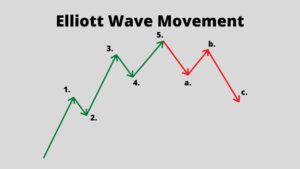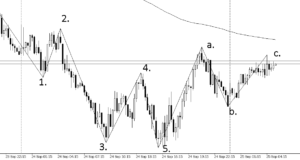Elliot Wave Theory
This theory proposes that in nature, many things happen in a five-wave pattern and the same is applicable to forex and other financial markets. The basic assumption here is that a given market will advance in a pattern of five impulse waves, which include three up waves, numbered 1, 3 and 5, and two down waves, numbered 2 and 4. The theory goes on to state that every action is followed by a reaction and thus the five-wave move is followed by a corrective three-wave move, comprising of waves A, B and C, wherein A and C are down waves and B is an up wave. So, a complete cycle of waves would include a five-wave move followed by a three-wave move, which becomes a subdivision of the next five-wave move.

The same rule applies in the case of a downward trend with five waves, wherein waves 1, 3 and 5 are downward, and 2 and 4 are upward waves. They are followed by three waves, A, B and C, wherein A and C are upward waves and B is a downward wave.

One thing to remember is that although the underlying 5-3 pattern remains constant, the time span of each wave may vary. Elliot believed that if one could correctly identify the repeating patterns in forex or stock prices, predictions about future price movements would become easier. This means traders could benefit by identifying the tops and bottoms, and follow it up with the requisite order. Another feature of this theory is that the corrective three waves actually become a part of the next round of impulse waves.
Another important feature of the Elliot Wave theory is that it says that each wave contains sub-waves. Thus Wave 1 has five sub-waves, which is also true of Waves 2 to 4. Based on this principle, the waves can be categorized into Grand Supercycle, Supercycle, Cycle, Primary, Intermediate, Minor, Minute, Minuette and Sub-Minuette, with their durations ranging from multi-century to multiple years to months, weeks, days, hours and even minutes.
But are forex movements actually so systematic and easily decipherable? Also, is it so easy to identify these waves and take a trading decision? First of all, different people are bound to interpret the movements in a different way and come to different conclusions. For this, three cardinal rules of the Elliot Wave theory need to be followed:
- Wave 3 can never be the shortest impulse wave.
- Wave 2 can never go beyond the start of Wave 1, and
- Wave 4 can never cross the same price area as Wave 1.
Knowledge of these rules, their applications and a little practice may help a trader use the Elliot wave theory for productive forex trade transactions.

